The Krasoń Young Plant Producers Group - one of the largest propagators of vegetable plants in Poland - has 27 years of production experience. The group was founded by Grzegorz and Agata Krasoń in Piaski (central Poland). Their children – Michał, Marcin, and Marta – currently work together with them. Currently, production is carried out in 4 locations in central and northern Poland. Their latest investment and technological innovation is the installation of VYPR 3p R8 LED modules from Fluence. The modules work in a hybrid system with the existing HPS lamps.
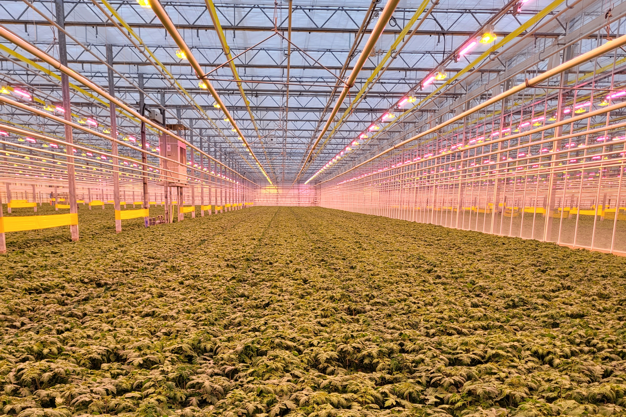
The company's hybrid lighting system. Source: Krasoń
Propagation in Krasoń Group, numbers and trends
According to the Krasoń Group, in recent years, the demand for young vegetable plants has been growing. Michał Krasoń says: "Not so long ago, in our group, the annual production of vegetable plants was approximately 200-250 million pieces, last 3 seasons, we have been producing over 450 million pieces of young plants annually".
He continues: "In the last few years, there has been a strong increase in the production of broccoli, then white cabbage, the production of lettuce and open field tomato plants are also growing very strongly – these orders are almost doubling compared to 2019 and 2020".
The Group's young plants are mostly sold on the domestic market. According to the company, approximately 8% of the total production is exported. Among others are Finland, the Baltic states, The Netherlands, the Czech Republic, Slovakia, Slovenia, Hungary, and Germany.
Karol Grzeczka (production manager of Złotów) says: "Last season, the Krasoń Group produced over 435 million plants for open field crops. The main vegetables are broccoli, white cabbage, lettuce, open-field tomatoes, cauliflower, and celery".
However, he adds: "The production of young plants for organic farming has not increased in recent years. Young plants for organic constitute a small share of our company's production, approximately 5 million plants of various species per year. These plants include broccoli, onion, white cabbage, cucumber, pepper, lettuce, and celery plants". Organic plants are produced in the company's greenhouse in Piaski.
The production manager also elaborates on the production of greenhouse vegetable young plants: "Last season, Krasoń Group produced 13 million pieces, mainly tomatoes (91%). The other 9% are cucumbers. The production of greenhouse tomato plants is dominated by grafted plants (86% of this production). Moreover, the vast majority of customers order plants ready to be placed on slabs (83% of orders). Only 17% of production are young tomato plants (25 days), and this number decreases every year".
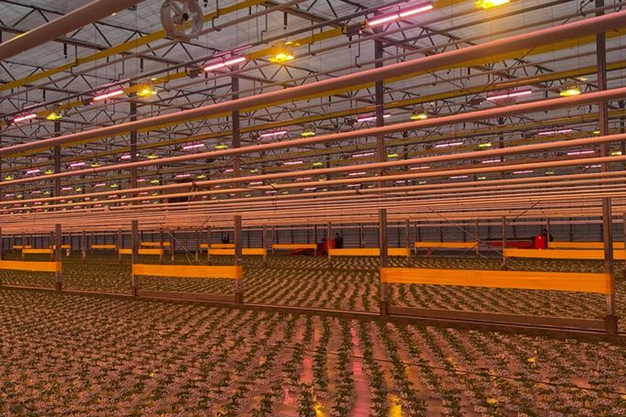
The company's hybrid lighting system. Source: Krasoń
Propagation under LED modules in a hybrid lighting system
Michał also tells about the development of the company's lighting system."Initially, we only used high-pressure sodium (HPS) lamps for lighting. However, 20 years ago, these lamps had less power and efficiency than today. 20 years ago, HPS lamps had a photon flux density of 60-70 µmol/m2 per second. Now HPS-lamps achieve values from 80 to 115 µmol/m2/s", he says. He continues: "We decided to purchase LED lamps to obtain higher radiation values. In Złotów, our goal was increasing the light intensity rather than saving electricity. By installing Fluence VYPR 3p R8 lamps on an area of 3 hectares in a hybrid system with the current HPS lamps, we improved the results from 80 to 125 µmol/m2/s. However, with the same energy consumption as when we used HPS lamps only."
The same lamps from Fluence are currently installed in the greenhouses in Kisiele (also in a hybrid system with the current HPS lamps). Through this investment, the company aims to increase light levels from 110 to 125 µmol/m2/s while reducing energy consumption by 25%.
Michał further explains their choice for the Fluence LED modules: "Various LED modules have been tested in their greenhouses during the last 4 years. For me, a uniform distribution of light in the hybrid system was an important feature. The aisles of the greenhouses in Złotów are 12.80 m wide, and the lamps are hung not on grids but on profiles running along the aisle – Each aisle has two of these profiles, and HPS and LED lamps are hung on them in a chessboard arrangement. With VYPR 3p R8 Fluence modules propagators, Złotów achieved a satisfactory uniformity and light level."
He adds: "Fluence VYPR 3p R8 modules produce light with a spectrum of 80% red, 10% green and 10% blue. Their production requires lamps with a universal light spectrum. The reason behind this is that young plants of various vegetable species are produced in the same greenhouses throughout the entire season. Of course, before purchasing, we conducted research with other growers from different countries. What's more, we previously tested these modules for a season, and they worked well".
The future: hybrid or full LED lighting?
"The Krasoń Group is currently focusing on hybrid lighting. Until recently, most propagators, also in the Netherlands, used only HPS lamps, and now producers are slowly starting to switch to hybrid lighting. Currently, there are only a few propagators in Europe (Germany, the Netherlands, and France) who use full LED modules," says Michał.
"After switching to hybrid lighting, we saw differences in the greenhouse's climate, such as in the temperature and humidity distribution. That's why we give ourselves a few years to work in a hybrid system before we make further decisions such as switching to a full LED lighting system," he adds.
Michał and Karol have noticed a difference between plants produced with lamps and those produced with a hybrid system (HPS and VYPR 3p R8). "For us, the most important thing is that our customers can see this difference. We receive calls from our clients who say that it is clearly visible that these plants grew under different lamps than before. The plants are more compact, the leaves and the side shoots are better developed and stronger, and the clusters are more developed", they say.
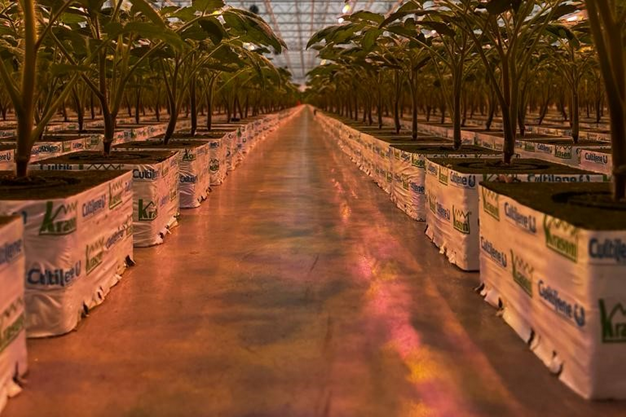
The company's plants are under the hybrid lighting system. Source: Krasoń
According to the propagator from Złotów, hybrid lighting with Fluence Broad R8 Spectrum allows for easier visual plant assessments than with red & blue full LED systems (without green light). "With red & blue only, we don't see colors as in daylight. What is equally important, there was full support from Fluence regarding both technical and horticulture aspects. The company's specialists Niko Kirsten, Leo Lansbergen, and Peter Hendrix have a wide knowledge of photobiology and support the grower during the investment," conclude Michał and Karol.
Propagation in Złotów
The Krasoń Group's team highlights that their northernmost facility in Złotów produces almost all year round, albeit with varying intensity. At the end of September, production starts with the first sowings of greenhouse tomatoes (for deliveries at the end of November). The vast majority of greenhouse tomato plants in Poland are delivered to customers in December and January. Tomato young plants are also produced for summer plantings and cultivation in a short cycle.
The facility's production of open-field crops starts at the beginning of January with the sowing of lettuce, cabbage, and cauliflower. At the end of January, the sowing of celery begins. The production of open-field tomato plants starts in March. The production of lettuce plants is carried out throughout most of the season, last year the last lettuce plants left Złotów at the beginning of October.
The facility starts to use assimilation lighting in seedling greenhouses at the beginning of tomato seedling production (from October onwards). The assimilation lighting is continued during the production of young plants of all vegetable species. " Lightening may even continue until May 10. This depends on the weather and the amount of natural solar radiation in a given season," explains the production manager from Złotów. He continues: " Each species is lighted according to its requirements, but in general, tomatoes are normally lighted for a maximum of 18 hours a day, and open field vegetable young plants for 12 hours".
Automated facilities
The Krasoń Group points out that the facilities in Kisiele and Złotów have automated processes for open-field crops' young plants production. For instance, internal transport is carried out on platforms. That's to say, the transport of trays or boxes from the seeder to the greenhouse, the transport from the greenhouse to the hardening area, as well as the packing of boxes with seedlings.|
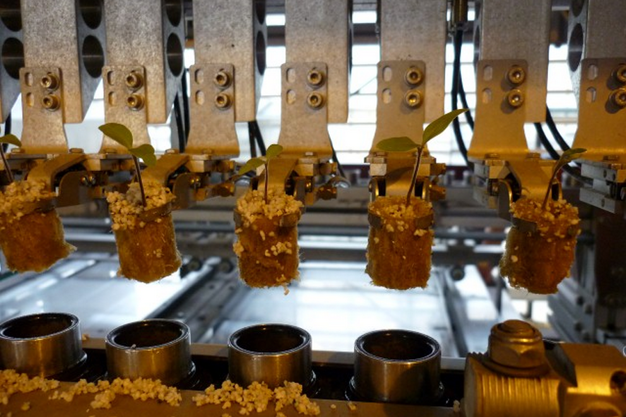
An example of automatization is in one of Krasoń Group's facilities. Source: Krasoń
Another example offered by the Group is the automated production of greenhouse vegetables' young plants. More precisely, there are robots for sorting seedlings, planters, carts for setting and spacing cubes for young tomato or cucumber plants, and a robot for caning (at the facility in Kisiele).
The Krasoń Group's history in short
It all started in 1997 with a small nursery in Piaski, this first greenhouse was 0,5 ha. Grzegorz and Agata Krasoń gradually expanded the nursery and improved their skills in propagation. Currently, they have 5 ha of greenhouses and 1 ha of hardening area in Piaski. The group's next investment was Złotów Nursery, where they started young plant production in 2013. These greenhouses have an area of 3 ha. In 2016, another 3-hectare facility was launched, accompanied by 1,8 ha of hardening area. There are plans to build another 0,5 ha of hardening area.
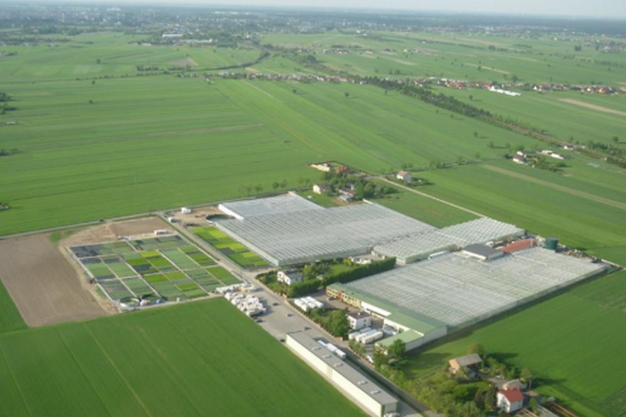
The Krasoń Group's facility in Piaski (Poland). Source: Krasoń
The newest Krasoń plant was built in Kisiele, where the group started propagation in 2019. Kiesle has 4 ha of greenhouses and over 1 ha of a hardening area. Also, here they have building plans: 3,5 ha of greenhouses (and accompanying hardening areas) are expected to be launched within the next 2 years.
Another investment of the Krasoń Group was the purchase of a 9-ha greenhouse nursery in Kowalew. Until now, this location has produced pickling cucumbers, but this season, part of this area (2 ha) will start producing young celery plants. On the remaining 7 ha, pickling cucumbers will be produced again. So in this season, Krasoń Group nurseries will comprise 21 hectares of young plant production.
Source:
Pod Osłonami
www.podoslonami.pl
For more information: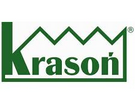
Grupa Producentów Rozsad Krasoń
Kisiele 40
97-340 Rozprza
Tel.: (+48) 44 732-59-95
http://www.krason.com.pl/
biuro@krason.com.pl
For more information:
Fluence
4129 Commercial Center Drive
Suite 450
Austin, TX 78744
Tel.: 512-212-4544
emea.sales@fluence-led.com
www.fluence-led.com
